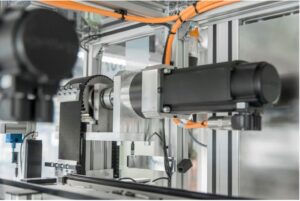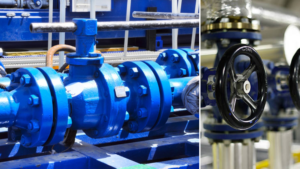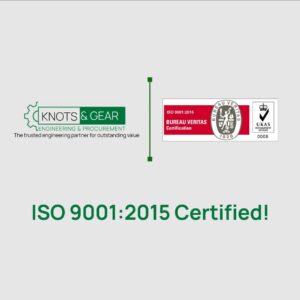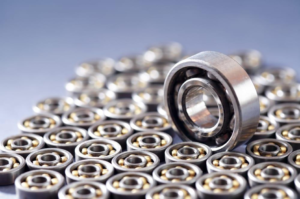What is a gearmotor?
A gearmotor, is a combination of an electric motor and a gearbox. Used for high torque and low-speed applications, it is essentially a pretty simple and inexpensive solution to achieve optimal energy efficiency.
More specifically, the dramatic rise in energy costs is driving more demand for improved process efficiencies. This presents an opening for gearmotors that can be used in a variety of applications and represents a tremendous opportunity for global energy savings.

Speaking of a gearbox, it’s frequently used in nearly every manufacturing or production facility that needs a lot of force to move heavy objects. They come in a variety of forms, sizes, and ratios, with the purpose of increasing torque whilst reducing the speed of the prime mover output shafts.
Gearmotors have a number of advantages over other types of motor/gear combinations. Perhaps most importantly, gearmotors can simplify design and implementation by eliminating the step of separately designing and integrating the motors with the gears, thus reducing engineering costs, along with extending the life of your equipment.
Undoubtedly, to a very great degree, a geared motor can be beneficial, it’s critical to choose the right one to get the best result. Essentially, irrespective of whether you opt to purchase a pre-engineered geared motor, or choose a gearbox and motor separately, it’s very much important for you to understand the application requirements to ensure you find and use the perfect match.
1. Get An In-Depth Understanding of The Requirements
This first step is often overlooked, but it’s very critical. The garnered information will be used in the selection process and will dictate the ideal motor for the application. Mentioned below are some of the common relevant technical and commercial requirements that you can consider:
General Requirements to understand
- Determine the dimension
- Determine the mounting orientation
- Determine the mounting size and type
- Determine the overhung and side loads
- Determine the lubrication type
- Input Power Source
- Identify the voltage
- Identify the frequency (Hz)
- Identify the maximum current (Amps)
- Identify the control type (if applicable)
Geared Motor Specifications
- Understand the size
- Understand the weight
- Understand the desired noise level
- Understand the life expectancy
- Understand the maintenance level
- Understand how to start and run torque in full load
Geared Motor Performance
- Understand the horsepower
- Understand the speed
- Understand the torque
- Understand the duty cycle
Operation Environment
- Analyse the application and ambient temperature
- Analyse the Ingress Protection (IP) rating
- Analyse the degree of ingress protection
These parameters, along with some project-specific requirements, will be helpful when navigating the selection process.
2. Choose a Motor technology that best suits the intended application.
After gaining an understanding of your application’s requirements, the next step is to make a comparative analysis of various motors manufacturers.
Each application has its own unique characteristics, so this step helps you to determine which of the parameters (e.g. horsepower, efficiency, life, starting torque, or noise ratings) are most important in selecting a perfect motor for your application.
At this phase, you need to determine if choosing a pre-engineered geared motor is more viable or if selecting the motor and the gearbox separately will better suit your needs.
3. Pay Laser Attention To The Speed & Torque Requirements
You have to ensure that your geared motor is appropriately sized for the application. Moreover, it’s also critical to know the output speed, along with starting and running torque. Hence, whilst selecting the ideal geared motor for your application, you must match the output speed (RPM) and the torque to the needs of your application.
Ideally, this is where going for a pre-engineered geared motor is preferable as the gear manufacturers have already done most of the heavy lifting for you. This ensures the geared motor will work seamlessly with your application.
So, to ensure you have a geared motor that perfectly fits for your application, you need to first calculate the starting and running torque, and then make sure the speed and efficiency match your application requirements.
It is equally important to review the potential design limitations including full-load running gearbox torque, the input speed, duty cycles, and the thermal characteristics.
And that, in a nutshell, is how you select the perfect geared motors for your application requirements. It’s imperative that you put in the effort to properly select a motor because a hasty decision and lack of testing can cause a host of problems with the gearmotor and could possibly damage the application.
The selection process can be arduous. But if you have the right technical people on board, a properly selected gearmotor can last for years and will optimize the application to its peak potential and efficiency. From a company perspective, an optimal gearmotor will also reduce operating costs and increase plant productivity.
At Knots and Gear, we work with a number of different leading manufacturing companies to deliver reliable gearmotors that suit your application requirements.










